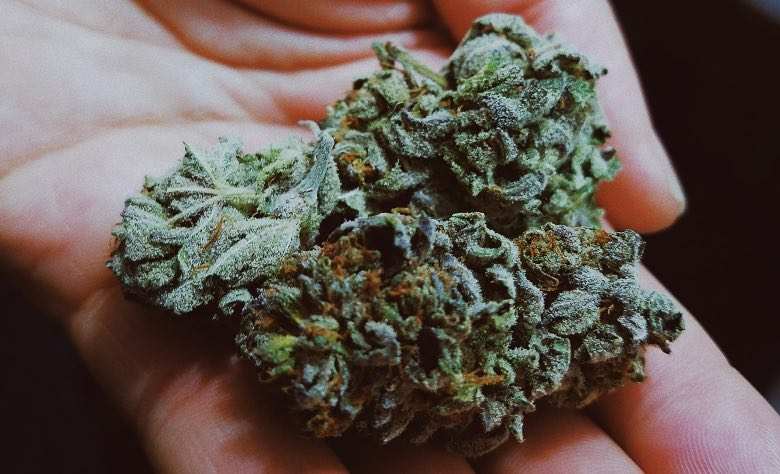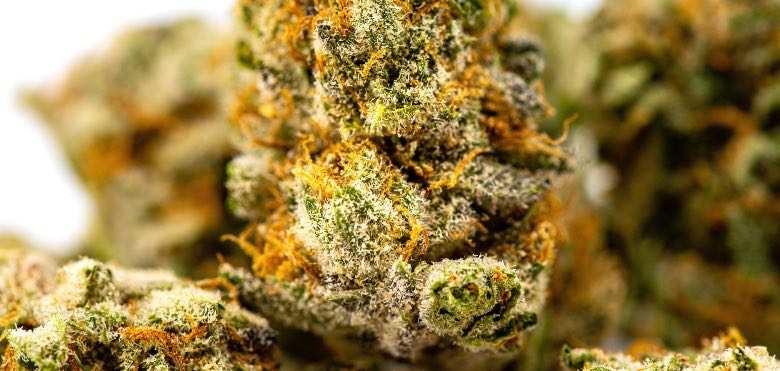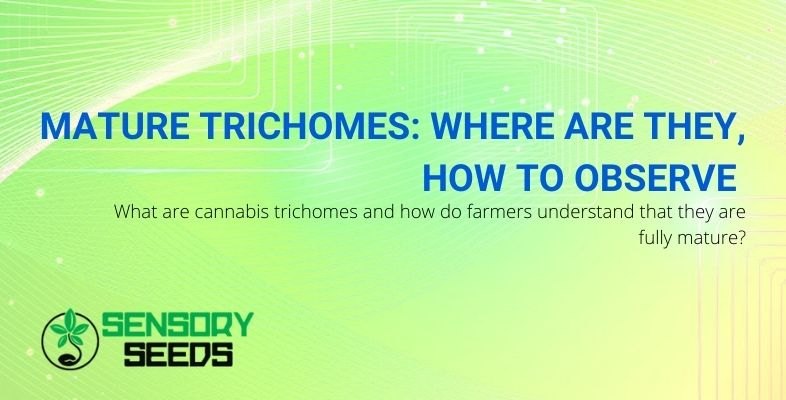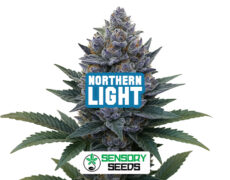Modified on: 26/08/2022
What are cannabis trichomes and how do farmers understand that they are fully mature?
Suppose you are a marijuana fan and cannabis products such as cannabis seeds and flowers. In that case, you will indeed have great curiosities about trichomes, the producers of cannabinoids such as THC and CBD. In particular, the mature trichomes arouse great interest in cannabis producers and consumers because they give significant indications on the inflorescences.
However, finding information about it is very difficult (also because in the UK, growing cannabis is an illicit or criminal offence according to the cases, while auto flower seeds, feminized and fast flowering seeds can be purchased for collecting).
But at Sensoryseeds we all have the necessary data to satisfy your curiosity. At the end of this in-depth study, you will know absolutely everything about the development and maturation of trichomes.
What are cannabis trichomes?
Let’s start with the general trichomes’ definition.
From the Greek “hair growth”, Trichomes are thin growths or appendages that grow on the surface of plants and protists (eukaryotic organisms that are neither animals nor plants nor fungi). The trichome has different functions and can have other structures: the most common are hair or glands.
Speaking of glands, cannabis trichomes are tiny mushroom-like growths made up of a stem and a gland. They grow on the entire surface of the plant — some are visible to the naked eye, others only with a magnifying glass or microscope — and perform essential protective functions:
- they ward off parasites
- they attract beneficial insects
- they protect cannabis from UV rays, the cold, wind, and other atmospheric agents
All this is possible thanks to a particular resin produced by the glandular structure; a sticky resin, extraordinarily dense and aromatic, covers the plant but especially the cannabis flowers.


The aromas attract beneficial insects and drive away parasites and other predators, while the thick resin layer prevents atmospheric agents from damaging the plant and all its components.
Like marijuana, trichomes have their life cycle: they are born, grow, mature, and then die.
It is precisely on ripening that we want to focus on the following lines to explain why it is so vital for growers and how to understand when the glands are fully mature.
Read also: Seedling: how to manage this particular phase and what problems can arise!
Ripe trichomes: what does it mean, and why are they important?
As you could read earlier, trichomes produce a resin that protects the hemp plant and promotes its proper development. This feature is essential for growers…, but there’s more. The resin contains both terpenes and hundreds of cannabinoids, including THC, CBD, CBG and many more.
Terpenes are molecules that determine the aromatic and taste profile of cannabis flowers. At the same time, cannabinoids are the active ingredients that choose the effects of the flowers and the plant in general!
“OK, but what does this have to do with mature trichomes?”
It has something to do with it! When the trichomes are at the point of perfect ripeness, the cannabinoids and terpenes are at their highest level. Marijuana buds have an intoxicating scent, a unique taste and very high percentages of cannabinoids, primarily THC.
For cannabis growers, this particularity is fundamental. Most of them go from marijuana seeds to collect fragrant and tasty flowers rich in THC and other active ingredients.
But how to recognize mature trichomes?
How to observe the trichomes and understand when they are ripe?


Watching the trichomes with the naked eye can be very difficult but feasible if you focus only on the flowers — where the capitulated trichomes grow, visible by observing the flowers at close range. However, it is preferable to use a magnifying glass to see the trichomes and their colouring perfectly.
The colour of the glands gives farmers information on the maturation stage of the trichomes (and, consequently, on the percentages of THC and other cannabinoids). Thanks to it, growers can harvest the flowers at the most favorable moment.
Note that:
- crystalline but transparent trichomes indicate that the flowers are not yet ripe;
- if the trichomes are partly milky white, and partially translucent, they suggest that the buds are almost ready for harvesting;
- when the trichomes are mostly milky and less amber, it is time to harvest the cannabis flowers to exploit the maximum amount of active ingredients and terpenes.
What if the grower misses the right moment?
When the flower goes beyond the perfect ripening stage, most trichomes take on an amber colour, and very few remain milky. Cannabinoid production drops dramatically, and THC is replaced by another non-psychotropic cannabinoid, CBN (cannabinol).
Read also: Cannabis diseases: causes, solutions, how to prevent and treat them
In conclusion
Today you learned what the term “mature trichomes” means, how they recognize them and how to observe them so that you understand all the signs.
Remember, however, that in the UK, it is not allowed to grow cannabis, but feminized seeds, auto flowering and fast growing cannabis seeds can be purchased for collecting them.
What are you waiting for? Buy the best BSF Seeds now on our online shop! We are waiting for you!









